Car accidents in Indiana remain a significant concern for safety advocates, drivers, and anyone who takes to the roads. As I looked into the latest statistics, some trends caught my eye—some encouraging, others a wake-up call for all of us. Let’s break down what’s happening on Indiana roads, what it means for you, and what we can all do to stay safer out there.
Table of Contents
ToggleA Snapshot of Indiana’s Car Accident Data in 2025
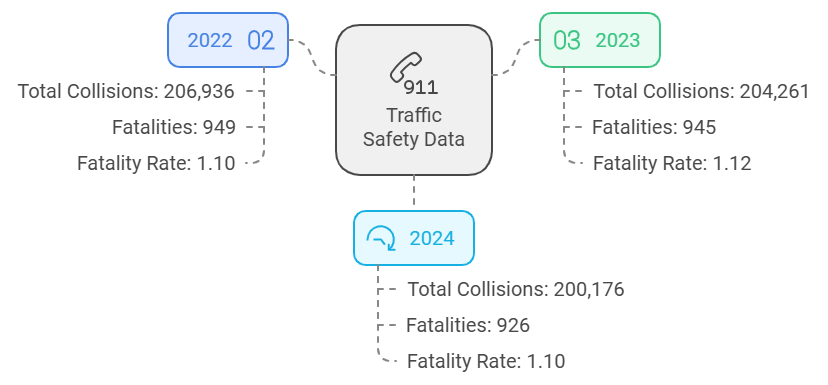
According to recent data from the Indiana Criminal Justice Institute (ICJI), the latest figures reveal that while overall collisions have decreased slightly, fatality rates remain concerning.
1.10 2023 1.12 1.10
Year
Total Collisions
Fatalities
Fatality Rate (per 100 Million VMT)
2022
206,936
949
204,261
945
2025
200,176
926
Though fewer collisions occurred, fatalities remain stubbornly high. It’s not just about the number of accidents but the severity, and that’s what demands our attention.
Serious Injuries and Alcohol’s Impact
Even as total accidents decline, serious injuries and alcohol-impaired fatalities underscore the dangers lurking on Indiana’s roads.
Risky Behaviors Driving Fatalities
Year
Serious Injuries
Alcohol-Impaired Fatalities
2022
3,307
152
2023
3,348
149
2024
3,281
146
Speeding and Improper Restraint Use
Here’s the data organized into a table format:
Year
Speeding-Related Fatalities
Unrestrained Fatalities
2022
290
253
2023
285
232
2024
279
227
Campaigns encouraging restraint use and speed limit enforcement still have work to do.
Younger Drivers Are A Persistent Concern
Young drivers, particularly those aged 21–34, remain disproportionately involved in fatal crashes.
Here’s how it’s looking:
Year
Young Driver Fatal Crashes
2022
112
2023
108
2024
106
Inexperience, risk-taking behaviors, and distraction play roles. Promoting driver education programs and ongoing mentorship could help shift this trend.
Vulnerable Road Users: Pedestrians and Cyclists
Year
Pedestrian Fatalities
2022
114
2023
112
2024
110
It’s not enough to focus on drivers; protecting those on foot or bike is crucial.
Patterns and High-Risk Times
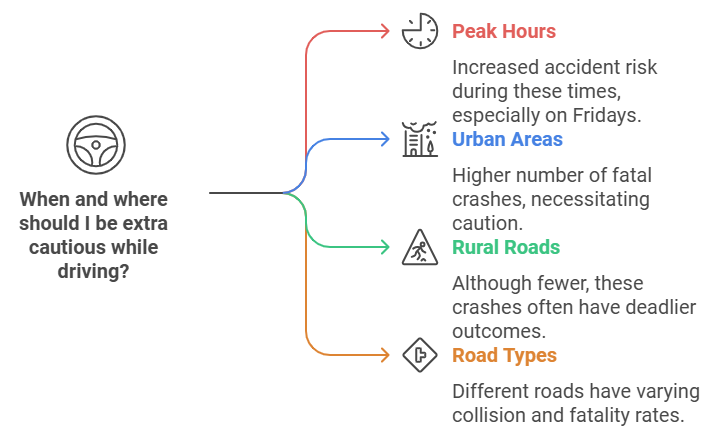
Some patterns in accidents point to when and where you need to be extra cautious:
Peak Hours: Weekdays, 4 p.m. to 7:59 p.m. Fridays are especially risky.
Urban vs. Rural: 59% of fatal crashes happen in urban areas, but rural roads often see deadlier outcomes.
Road Types: City streets see more collisions, but U.S. routes and county roads lead in fatalities.
Safety Recommendations Everyone Should Consider
There’s no one-size-fits-all solution, but adopting these habits could save lives:
- Always buckle up—no exceptions.
- Say no to impaired driving, whether from alcohol, drugs, or fatigue.
- Follow speed limits and adjust for weather conditions.
- Put your phone away while driving.
- Encourage teens and young adults to participate in defensive driving courses.
- Watch for pedestrians and cyclists, especially in urban areas.
- Every small action you take contributes to safer roads for everyone.
Uber Safety and Car Accident Trends
A critical report in recent years highlighted alarming incidents such as sexual abuse during ride-share. These cases show how passenger safety isn’t guaranteed just by opting for a ride-share service.
For Indiana, this connection matters because impaired driving remains one of the top causes of fatal crashes. If ride-sharing is part of the solution, companies must ensure both drivers and passengers feel secure.
To bridge the gap, some ideas come to mind:
- Mandatory Training for Drivers: Educating ride-share drivers on preventing misconduct and recognizing red flags.
- Enhanced Safety Features: More advanced GPS tracking, emergency buttons, and rider verification.
- Public Awareness Campaigns: Encouraging users to share trip details with trusted contacts and sit in the backseat for added safety.
Ride-sharing can save lives by keeping impaired drivers off the road, but it’s on companies and communities to make it safer for all users.
Legal and Insurance Insights You Need to Know
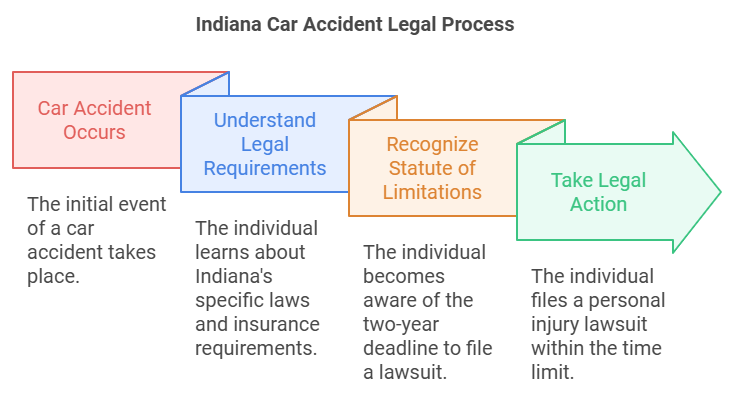
Indiana has specific laws and insurance requirements that play a crucial role in how car accident claims are handled.
If you’ve been involved in an accident, it’s important to be aware of these details, as they can significantly impact your ability to seek compensation and protect your financial stability.
Don’t Wait Too Long to Take Action
Missing this deadline can mean losing your right to pursue legal action, even if you have a strong case.
Acting promptly not only ensures your case is valid but also allows your legal team to gather evidence while it’s still fresh.
Shared Responsibility Doesn’t Bar Compensation
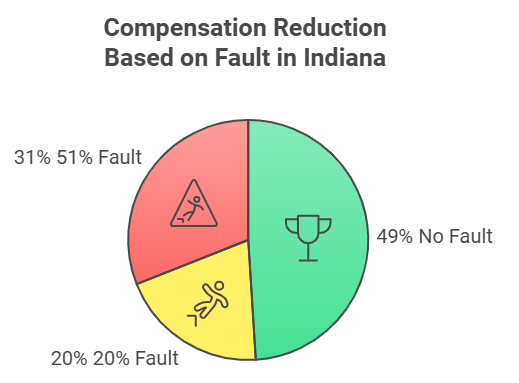
For instance, if you are found to be 20% at fault for the accident and your damages are calculated at $50,000, you would only be eligible to receive $40,000 (80% of the total). If your fault exceeds 51%, you are not entitled to any compensation.
This rule emphasizes the importance of building a strong case to minimize your share of liability.
Minimum Liability Insurance Requirements in Indiana
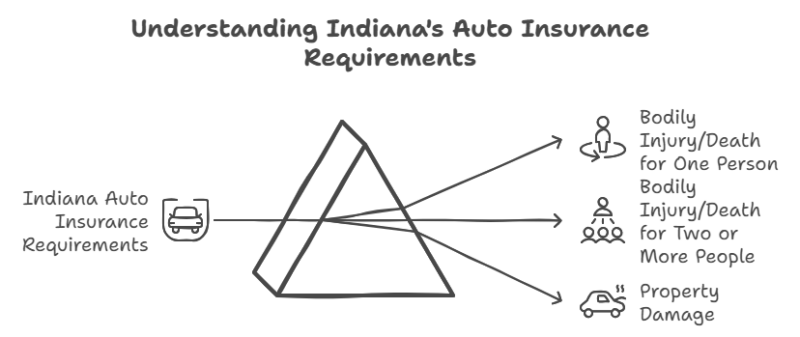
The minimum liability coverage requirements are:
- $25,000 for bodily injury or death of one person.
- $50,000 for bodily injury or death of two or more people.
- $25,000 for property damage.
*Having insurance that meets or exceeds these limits is critical for complying with state laws and ensuring your financially protected. However, given the rising costs of medical care and vehicle repairs, many drivers choose to carry higher coverage limits for added security.
Final Thoughts
Driving is something most of us do daily, often without a second thought. Yet, the risks are real, and the stakes couldn’t be higher.
By recognizing trends, staying informed, and committing to safer habits, we can honor the lives lost and work toward a future where fewer families endure the pain of tragedy.
Whether you’re behind the wheel, crossing the street, or using ride-share, every decision matters.
Sources
- in.gov – Indiana Crash Facts 2022
Related Posts:
- Indiana Lung Cancer Statistics 2025: Key Data and Trends
- Lafayette, Indiana Population Statistics 2025 -…
- Indiana Population 2025 - Trends and Growth
- Fort Wayne Population 2025 - Growth, Trends, and…
- South Bend Crime Rate in 2025 - Looking at Statistics
- Indiana Companies Play Key Role in Military’s PFAS…










